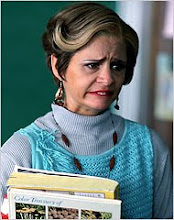
The video of Geena Davis speaking about her foundation “See Jane” was truly shocking. Geena Davis starts by talking a little bit about the movies she has been in that have encouraged women’s independency and women’s rights, films such as “A League of Their Own” and “Thelma and Louise”. She says that young girls find these films inspirational. For example, after “A League of Their Own” was released, young girls told her that the film encouraged them to do sports. Then Geena Davis talks about the media and the message that it is sending to young children. She compares cartoons from now to back when she was a child, and points out that there has been little change. She talks about the classic cartoon female characters such as, Minnie Mouse, Daisy Duck, Granny from Looney Tunes, and Smurfette. She tells the story of Smurfette and how it was not until she had Smurfette plastic surgery that the rest of the smurfs accepted her. These characters set a standard for how society believes women behave and how they should look. From a young age, female children become aware of their self image and that it should transform to what is accepted in the media. Cartoons are highly sexualized and stereotyped and the goal of See Jane is to reduce this gender stereotyping and increase the amount of female characters in film and television. In the study conducted by See Jane, it was found that 3 of 4 characters in G-rated films are male characters. The message that the media sends out is that women are worth less than men and that the self-worth is different. When Geena Davis brought the results of her study to media heads, they were unaware and shocked at the results.
This video is relative to what we have been reading in “At Work in the Iron Cage” because of the various ways that men and women view their roles as a corrections officer. Male colleagues in this field have a masculine attitude toward the ability to deal with violence and their dignity in the workplace. Male corrections officers are more prone to taking action and violence. Women officers use their communications skills and sensitivity to coping with obstacles at work. Women are more likely to listen and talk with the inmate while a man is more likely to be aggressive and forceful. This is an example of how people “do gender” in a prison system, as “doing gender” is something we are clearly taught from a young age, as pointed out by Geena Davis.

No comments:
Post a Comment